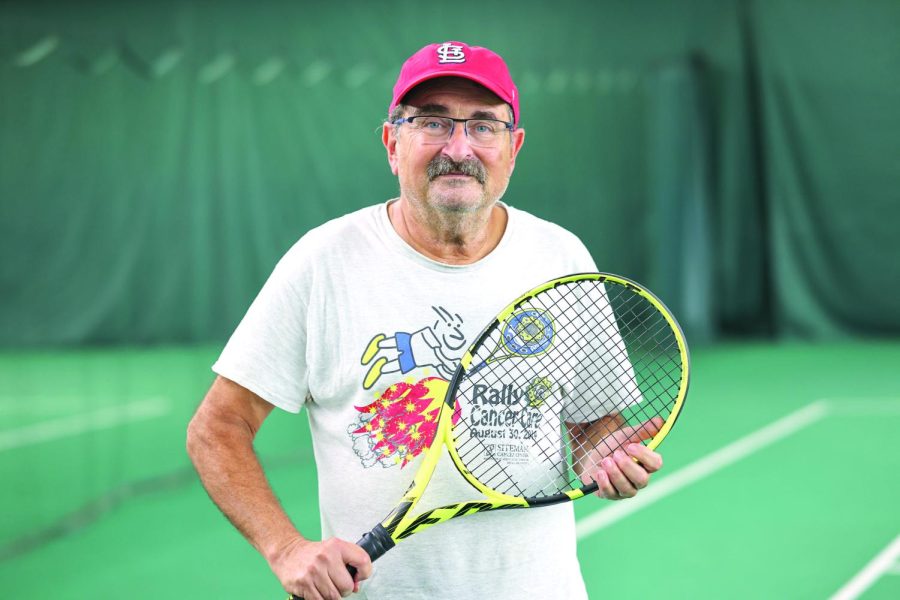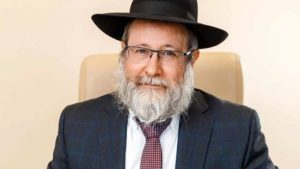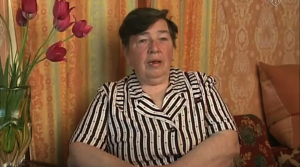Love, set, match! Checking in with longtime Jewish tennis coach Mark Platt
Published April 29, 2022
Over the past 45 years, nearly 100,000 St. Louisans have learned to play tennis from instructor Mark Platt. Platt, at 67, continues to teach, create innovative tennis training programs and be a goodwill ambassador for the game he loves.
Platt, who is Jewish, is also a 2018 inductee into the United States Tennis Association (USTA) Missouri Valley Hall of Fame. It all began in the early 1960s at the Heman Park tennis courts in University City. Platt had good hand-eye coordination, so he tried golf and tennis.
“I was pretty good at both,” Platt said. “I could afford golf lessons, but I couldn’t afford clubs. But with tennis, for $2 you could get an annual permit, and the lessons were free. Now I’m trying to work with U. City again to offer free lessons to kids.”
It didn’t hurt that Platt learned the game from one of the best. He took lessons from another USTA Missouri Valley Hall of Famer, Earl Buchholz Sr.
In 1976, Platt began teaching tennis at the same U. City program where he learned the game. He has frequently been recognized for his teaching techniques and, in 1991, he was named one of the top five tennis teachers in the United States in a Tennis Magazine buyer’s guide.
“That was incredible because we’re in little St. Louis,” Platt said. “Usually, to get recognized nationally, you need to be in Florida or New York.”
For Platt, teaching tennis is only a small part of his work with young players. He also views his role as mentor, facilitator and networker.
“I’ve changed the trajectory of my student’s lives,” he said. “I had a girl of Ukrainian Jewish descent, Yelena Podorozhansky, who came to the J 30 years ago. This little girl was hitting the ball outside the fence (around the tennis court). I thought I could work with her. She eventually got a full tennis scholarship at MICDS and helped them win four state team titles.”
Platt would often drive Podorozhansky to tennis practice while she was developing into an elite player, and he boosted her language skills, learning a new word in English every day. Later, he helped get her into the University of Missouri-Kansas City, where she earned a degree in medicine in 2005. She now has an obstetrics practice in St. Louis, and Platt is teaching her daughter to play tennis.
Carving out his own niche
Tennis has always been a passion for Platt, but he initially tried the business world. After earning a degree in economics from Washington University, he was hired by J.C. Penney.
“I was 21-years-old, and I felt like if I learned the retail experience, it would be a good fit,” Platt said. “I was a very insightful guy, and it was going really well. I went through the training, they flew me up to New York for an interview, and I thought I had found my people. Then a recession hit in 1980 and they announced all jobs were frozen. That’s when I decided I would never put myself in that position again, to be part of a corporate situation.”
Instead, Platt forged out on his own, carving a niche in the world where he felt most comfortable: on the tennis court. He found a perfect market in beginners of any age and, in 1984, created Beginner’s World Tennis. It’s designed for new players and uses a combination of parties, team tennis leagues, community-based lessons and special events.
He often found new students by hanging around tennis courts on a warm spring day, looking out for players with awkward strokes or older, out-of-date equipment. Wooden rackets were one clue.
Platt’s innovative tennis teaching approach impresses many of his peers, including former Lafayette High School girl’s tennis coach and teaching pro-Donna Stauffer.
“I went to a couple of his parties to see for myself, and I was just amazed at his ability to bring people together and to make tennis so much fun for everyone,” Stauffer said. “He’s such an innovator and a pioneer. Some of the short court programs he’s created haven’t been done before.”
Those programs include a game Platt invented known as Fun Tennis 44, which uses a 44-foot-long pickleball court. The players hit a dense foam ball but, unlike pickleball, they use tennis strokes. Platt said the game is a building block for tennis.
“The proof of concept is a 7-year-old girl who’s a phenomenal player,” he said. “She’s been winning every match in Fun Tennis 44. She’s also developing skills and patterns of play. I came up with the game by studying variations of tennis.
“There are about 20 different derivatives of tennis. I narrowed them down to the ones that shared a common core of strokes because we spend years perfecting strokes. Then I modified pieces from different games and developed a consistent scoring.”
Craig Sandvig, former coach of the Washington University tennis team, credits Platt with helping to increase the popularity of tennis through new approaches like Fun Tennis 44.
“Mark is the single best grower of the game that I’ve ever seen, and I’ve been in the business for over 40 years,” Sandvig said. “He’s constantly innovative, coming up with new programs. He’s on the phone constantly. If I had one good idea, I’d be happy. He has a new idea probably three times a day. He’s truly amazing.”
Matchmaker Mark Platt
Over the years, Platt has found his sweet spot in beginners, whether they are preteen kids or adults. That latter group was where he discovered the importance of the social aspect of group lessons.
“Tennis is not always a real hospitable place for new players,” he said. “Adult beginners need a support system, and they need tournaments. The first one I held was at Kaufman Park in U. City in 1984. It was sponsored by Pepsi, we had a big trophy and we made it fun co-ed event, which was kind of novel.”
Platt found that planning tennis parties, leagues and special events helped to increase his business.
“Retention was much higher because the beginners found other people to play with,” he said.
In addition to teaching tennis, Platt has developed into something of a matchmaker: Fifty-six couples who met through his program have gotten married. He also has helped many students find good jobs. Platt’s networking and organizational skill came in handy when he branched out into charitable work.
“I was good at teaching tennis, and I was very good at organizing big events,” he said. “So I started working with the Siteman Cancer Center about 20 years ago. We had 19 successful events. We raised half a million dollars, and it was a terrific event.”
Platt has a steady stream of new tennis players in the last couple of years, thanks in part to the pandemic. Tennis participation in the United States increased by 22% in 2020, according to data from the Physical Activity Council’s participation sports marketing surveys. The surveys showed 21.64 million people hitting the courts last year, including 6.7 million first-time players. Platt said tennis was the ideal athletic activity for the COVID environment.
“We were rated the No. 1 sport for social distancing,” he said. “New players want to play right away, so I developed a rally tennis game that I incorporate in my lessons. I can improve them very quickly. And in the first group lesson, at the end of the hour, they’re actually playing a game.”
When he’s not on the court, Platt and his wife, Jeannie, can often be found on the golf course or gardening. Jeannie Platt is a horticulturist at Old Warson Country Club.
Platt shows no sign of slowing down, but he plans to cut back on work in a couple of years. Meanwhile, he’s planning his next big event, the 20th anniversary of the Siteman Cancer Center tournament now scheduled for August.
“It was cancelled in 2020, which would have been our 20th year—then it was cancelled in 2021,” he said. “I view it as one of my legacies. We usually average somewhere around $50,000 in donations, but the goal is always to get to $100,000.”


















